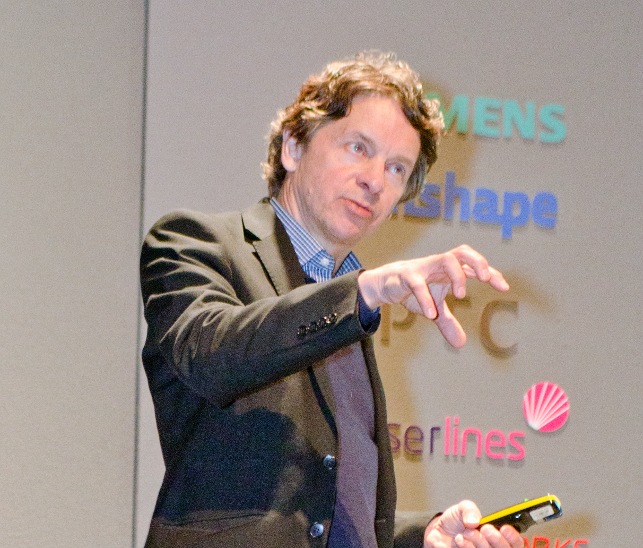
Philip Norman
As you might expect from an artist, sculptor, architect, and accidental engineer: Philip Norman’s talk was luxuriously tangential, non-linear and drew from a broad palette of influences.
Well, would you expect to learn about ‘Integritas, Consonantia, Claritas’ – the guiding principles of 13th century philosopher Thomas Aquinas at an engineering conference?
In his search for truly universal 3D modularity, Philip has stumbled upon a range of cost effective, ‘repurposeable’ robots connected via mechanical and electrical axially and orthogonally reconfigurable joints.
His work relies upon Bio-mimicry, favouring flexible materials over their stiffer cousins wherever possible; this means using polymers – lots of polymers.
As a result, Philip’s robots contain substantially less ferro-magnetic material than any others of their kind – making them perfect to survive even the harshest electromagnetically active environments, notably CERN.
This is an edited version of an article written by Grant Riley of ThinkRefine. To read the full article visit ThinkRefine.com

Martin Enthed
This year, IKEA will be printing 213 million copies of their 2016 catalogue!
Martin Enthed and his team create tens of thousands of unique images (customised for each country it serves) each year to fill the pages of their catalogues and website.
Before 2006, all product images still involved assembling every iteration of a product, building hundreds of kitchens, and taking real photographs of them.
In 2006, the first computer generated product image (of a chair) appeared in the catalogue. Fastforward to 2009, and over 10,000 computer generated images were in use.
“Today, 75% of product images are 3D-only,” he said.
If any of this strikes you as cheating, put your sustainability hat on… With a computer generated image of an IKEA kitchen, there is no waste: kitchen cabinets don’t need to be assembled, accessories aren’t wasted, neither is the energy needed for lighting, they’re even saving the wasted carbon that would be needed to move everything around.
But what about the photographers I hear you cry? Don’t worry about them, they’re doing better than ever: IKEA’s global product range is expanding at such a rate, that they actually take more traditional photographs now, than they ever have.
From an employee development perspective, it was interesting to learn how they dealt with the skills-gap between 3D CAD artists and photographers… the (somewhat brilliant) answer:
“Every 3D artist has to become a junior photographer, and every photographer has to become a junior 3D artist,” he said.
This is an edited version of an article written by Grant Riley of ThinkRefine. To read the full article visit ThinkRefine.com
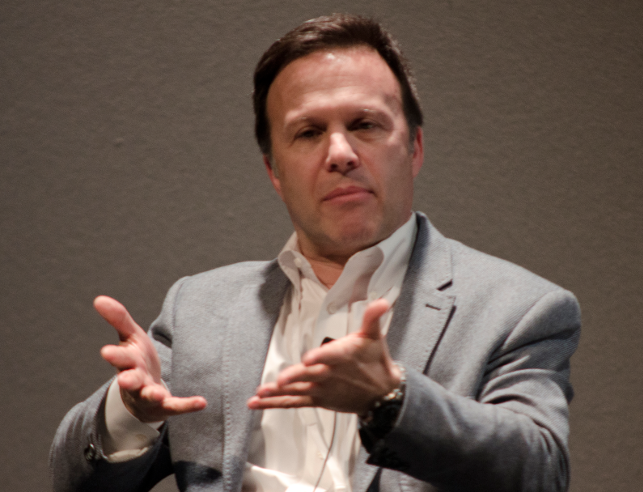
Gian Paolo Bassi
SolidWorks CEO Gian Paolo Bassi included some huge statistics in his presentation: boasting over 3 million licences in use, and 5 million people actively involved with SolidWorks products worldwide.
There is no doubt in anyone’s mind that SolidWorks is the juggernaut of the 3D CAD world.
And yet – despite the strong market position held by SolidWorks, startups like Onshape (with its flexible, low-priced monthly subscription) is already influencing SolidWorks’ traditional CAD pricing plan.
Gian Paolo introduced a new ‘Term Licence’ pricing plan that sounds strangely familiar… ‘Lower upfront cost, flexible and scalable licensing options.’ – free market capitalism in action!
SolidWorks is clambering onto another bandwagon too: the Internet of Things.
Connected products are hot right now, and are set to become ubiquitous over the next few years. Gian Paolo shared his goal for SolidWorks: to become THE single CAD environment people use to develop internet connected products.
This means using the PCB design add-on to design both the enclosure and electronic hardware at the same time.
One cool thing that SolidWorks is at the forefront of is ‘Model Based Definition’ – adding dimensions, tolerances and notes right into the 3D file – so you don’t have to produce old fashioned 2D documentation every time you need to get something made.
It looks promising, but we’re unsure how it will fit in with ISO BSI 8888 standards.
The rest of the talk concerned SolidWorks’ commitment to mobile apps. Gian Paolo was most proud of the new 3D design apps for kids, and whilst we are familiar with their focus on getting SolidWorks licences into universities and schools, this takes ‘getting them hooked while they’re young’ to a new level.
This is an edited version of an article written by Grant Riley of ThinkRefine. To read the full article visit ThinkRefine.com
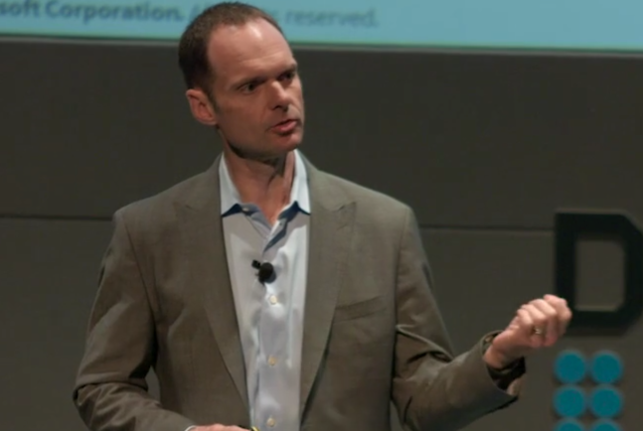
Simon Floyd
It seems as though Microsoft’s Simon Floyd eats, sleeps and breathes connected products.
Simon’s core message was one of user-centred design (on steroids). Instead of launching a product, sending out a questionnaire, or talking to your users – we should be automatically improving the design, using vast amounts of data produced by connected products.
In 2015 we saw an explosion of ‘The Internet of Things’- and Simon lamented that we aren’t taking advantage of these new, rich sources of data:
“Data is fuel for innovation,” he said.
Increasingly, products are becoming more than their mechanical parts… Simon articulates a neat description of contemporary products: “They are a collection of solutions.” He enthusiastically encouraged industrial designers and mechanical engineers to get more involved in the digital aspects of product design, for example, he’d like us to:
• Work out what info we need to collect
• Consider sensor design
• Learn about data science
• Start building device partnerships
• Get interested the UX / UI digital experience
• Think about apps and platforms
“Connected product data will help us discover those unarticulated problems,” he said.
If we use this data correctly, we have the ability to find the missing needs and problems that users may never have complained about – discoveries that could fuel product improvements on a much deeper level.
This is an edited version of an article by Grant Riley of product design consultancy ThinkRefine. Full article at ThinkRefine.com
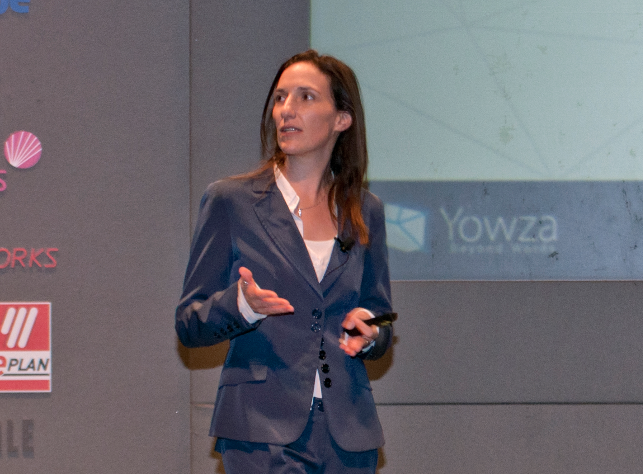
Naomi Klein
Something a little more light hearted to end the day – Yowza is developing what amounts to Google’s advanced ‘Search by Image’ but for 3D models.
You won’t realise how useful this is until you try searching for something on Thingiverse.
Naomi believes text tags and file names are useless, because they rely on lazy humans entering enough relevant information when they first upload a file.
Until Yowza goes live, that’s all we have to go on – and she’s right, it is rubbish. If someone uploads a model of a chair, calls it a chair, and only ever tags it as a ‘chair’, how is someone searching for a ‘seat’ going to find it? And that’s before you consider different languages.
The cool demo that Naomi gave us, shows that Yowza have been working hard on some very useful algorithms – this startup is hot!
This is an edited version of an article written by Grant Riley of ThinkRefine. To read the full article visit ThinkRefine.com
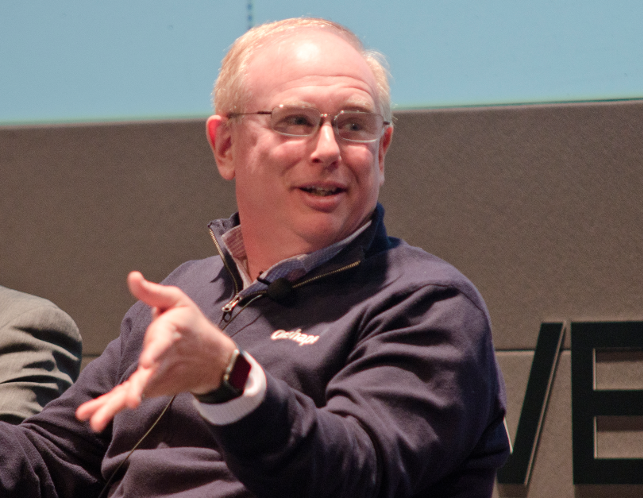
Jon Hirschtick,Onshape
The cloud
All the main CAD players focused on how the development process is changing towards a loop of development where product feedback is continuous.
Team collaboration within the design space is one of the main uses being touted for cloud solutions.
Onhape explained how it provides a platform where everybody uses the same version of the software, as all users’ updates are done together.
They also pushed the idea that they had “got rid of the CAD file” and that this is live collaboration (as the demos showed) allowing simultaneous working and not just having access to copies of files. But their main exclusive was the movement towards open source.
“Future script” is the code behind Onshape and will be opened out for the features layer of the software so that users can develop easier ways for using the product themselves.
David Heiny of SimScale talked about simulation in a browser and showed a demo of the software being able to process the flow rates of a value across multiple processors from exploiting the use of the cloud.
I found the idea of their user community being crowdsourced an interesting idea. The free user information models are open for anyone to use, so rarely would you need to start from scratch.
“The Future of Making things: How the cloud will power the future” presented by Paul Sohi (Autodesk) was probably my favourite presentation of the day.
Paul talked about how his team had used Fusion 360 to control product development and collaborative team working across the world to complete a project much quicker and at a much lower cost using Industrial 3D printing (because of the size of the object).
They were developing a 3D printed cycling prosthetic for a German Paralympian who won silver in London 2012 and will be at Rio.
This is an edited version of an article written by David Land of market research, industry analysis and consulting firm, Cambashi. To read the full article visit cambashi.com
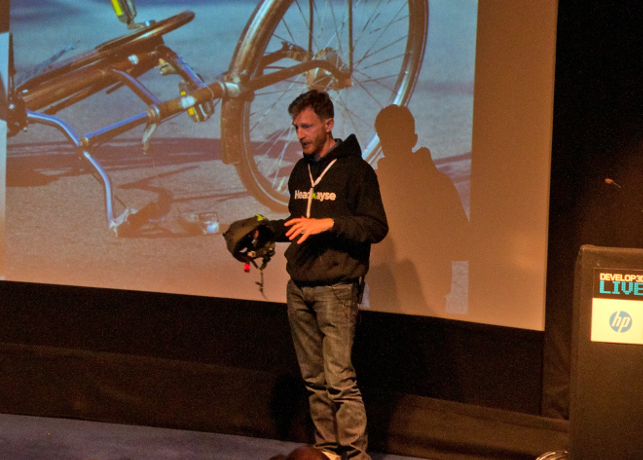
Andrew Redman, Headkayse
Product design
In the Product Design stream I saw three presentations delivered with a passion and verve that more than matched the palpable buzz in the vendor exhibition galleries outside the auditorium.
Tom Wheeler, Poppy Farrugia and Dom Eggbeer’s talk served a testament to just how accessible and cost-effective 3D prototyping has become.
Their work — part of Tom’s NotBroken project — centred on the creation of a 3D printed carbon fibre arm brace to allow Tom to carry on riding his mountain bike after a brutal 2011 crash left him with life-changing paralysis in his right arm.
Successfully navigating the limitations of low cost materials, the harsh physical demands of the sport, and Tom’s very specific aesthetic demands (!), they were able to print multiple design iterations that are bringing them closer and closer to a definitive version, and this learning experience will hopefully allow them to apply their know-how to a broader range of sports injuries.
Next up was Andrew Redman, the design director of the Headkayse One – the world’s first flexible, one-size-fits-all, multi-impact cycle helmet.
What started as a wild idea for a foldable cycle helmet evolved into three gruelling years of design, development, and testing, coupled with an ongoing battle to crowdfund their project, with the team showing true underdog spirit to succeed in spite of a market dominated by big brands, and ultra-strict regulatory demands.
Sebastian Andraos from HAL Robotics, a self-confessed nerd, and engaging speaker, covered the hyper-advanced world of machine control software and demonstrated some of the areas in which HAL are enabling machines to better react to their external environments, and in doing so, taking automated fabrication to the next level.
This is an edited version of an article written by Rory Christian of market research, industry analysis and consulting firm, Cambashi. To read the full article visit cambashi.com
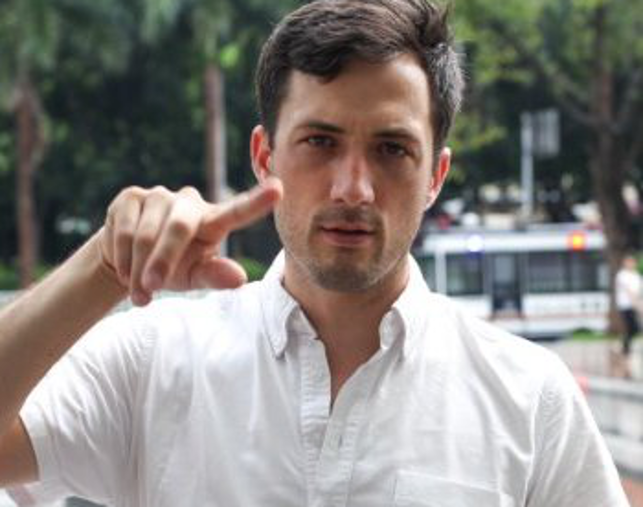
Spencer Wright, nTopology
Future fabrication
At DEVELOP3D LIVE, the ‘Future Fabrication’ track explored additive manufacturing – or what is commonly known as 3D printing.
Spencer Wright from nTopology opened the track, talking about ‘Designs for Lattice Structures’ and the opportunities and challenges this brings.
So we learnt of separating the design of a lattice structure from its other properties to optimise the weight of components while maintaining the ability to withstand the forces that will act upon the component when in use.
However, Wright cautioned that conventional CAD doesn’t have the tools [yet?] to support additive manufacture.
You can draw the conventional shape, of course, but if it is to be 3D-printed, CADalone can’t help you to manage or design the support structures needed during manufacture, or additional lugs needed to support it later for finishing.
Laurence Marks, of SSA, spoke to this point under the heading ‘How is Additive Manufacturing Driving Design by Simulation’.
Optimising lattice design may be the first step of this new manufacturing technique but Marks proposed that what is new and important is Process Simulation.
Moldflow casting and stamping simulations are common but additive manufacturing, or 3D printing, simulation is new.
Simulation analyses stresses and distortions and shows how to build support structures necessary for the new manufacturing process.
This means it is essential to understand your material at the design phase, as there can be multiscale issues – the buildup of layers can cause cracks at the micro level that have an impact on the finished product.
This is an edited version of an article written by Christine Easterfield of market research, industry analysis and consulting firm, Cambashi. To read the full article, including details of talks from Renishaw, 3Dhubs and Authentise visit cambashi.com
To view videos from DEVELOP3D LIVE 2016, click here.
Couldn’t make it to DEVELOP3D LIVE, or simply too many amazing talks to see them all? The good news is, many of the videos are now available for your viewing pleasure on DEVELOP3DLIVE.COM — plus we have the best of the rest from 2012-2015.
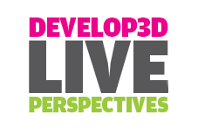
Opinions on the single-day conference from those that were there
Default

